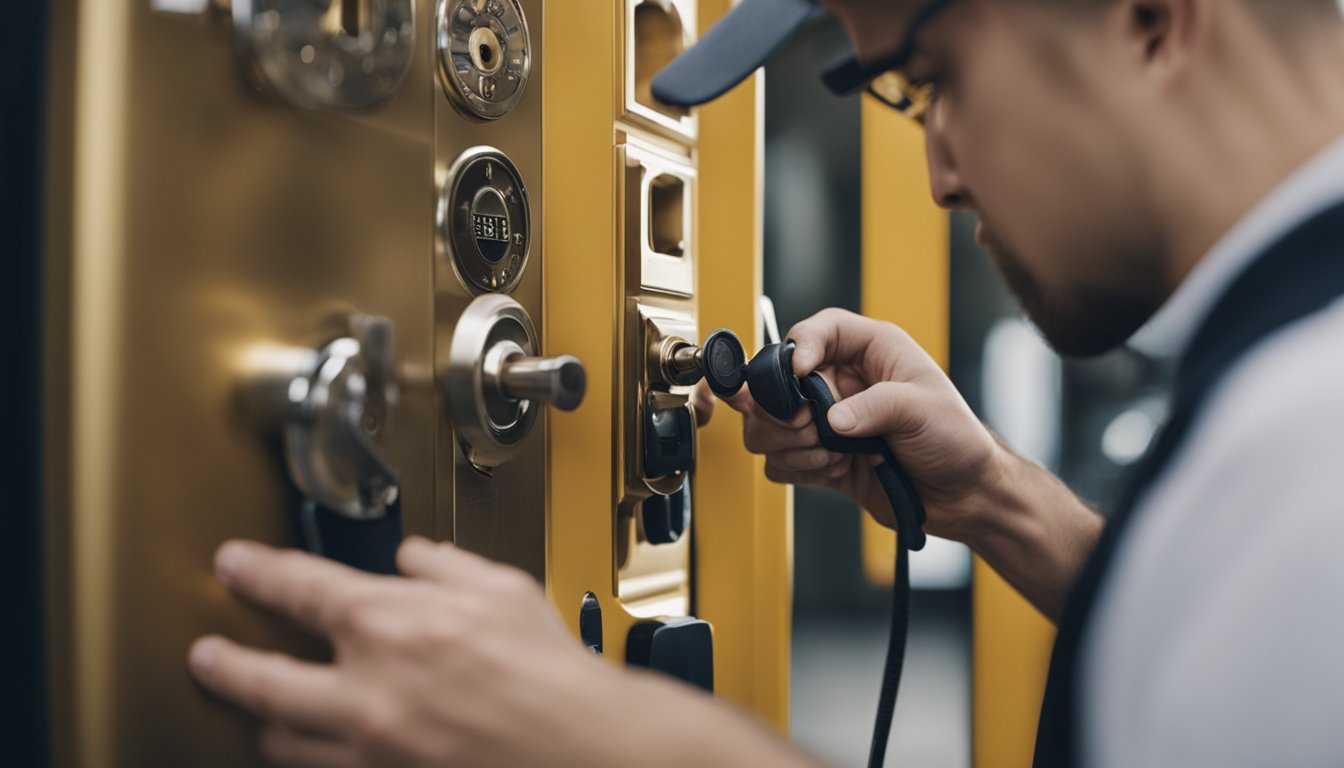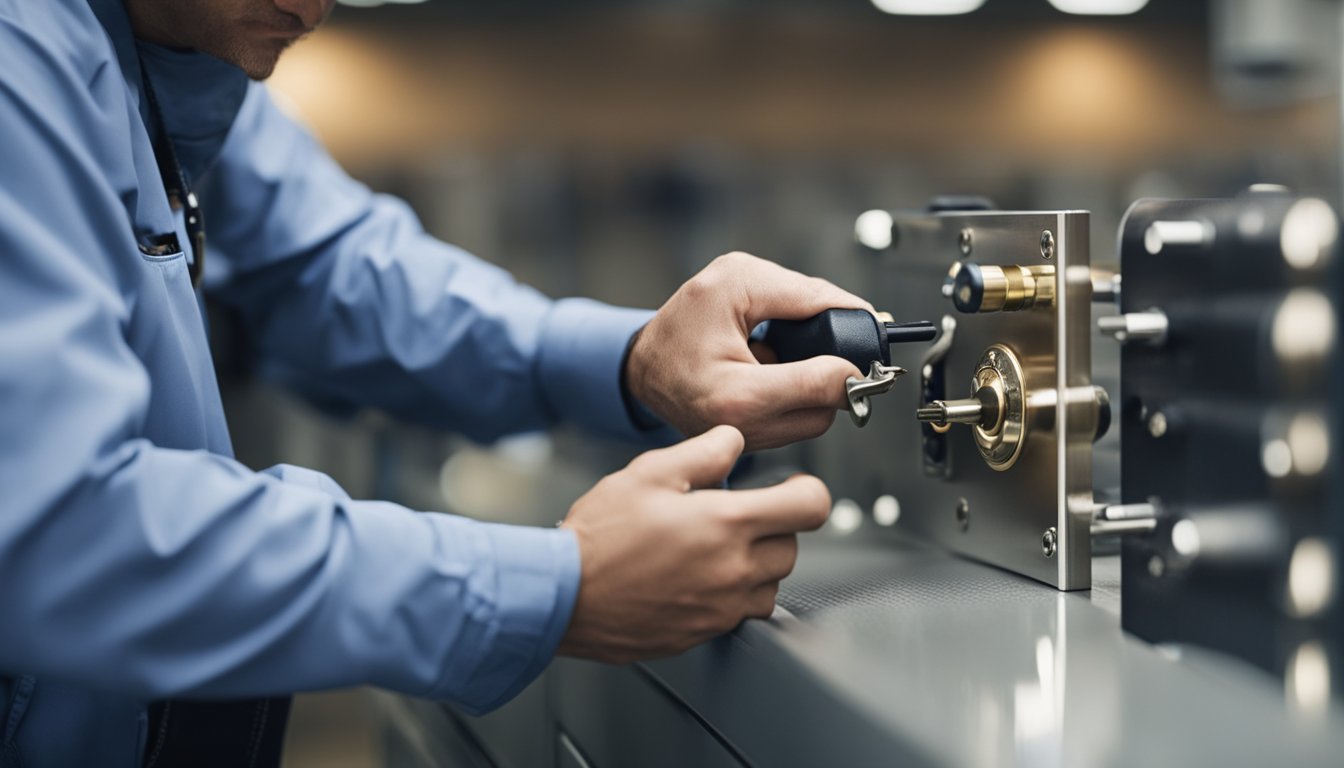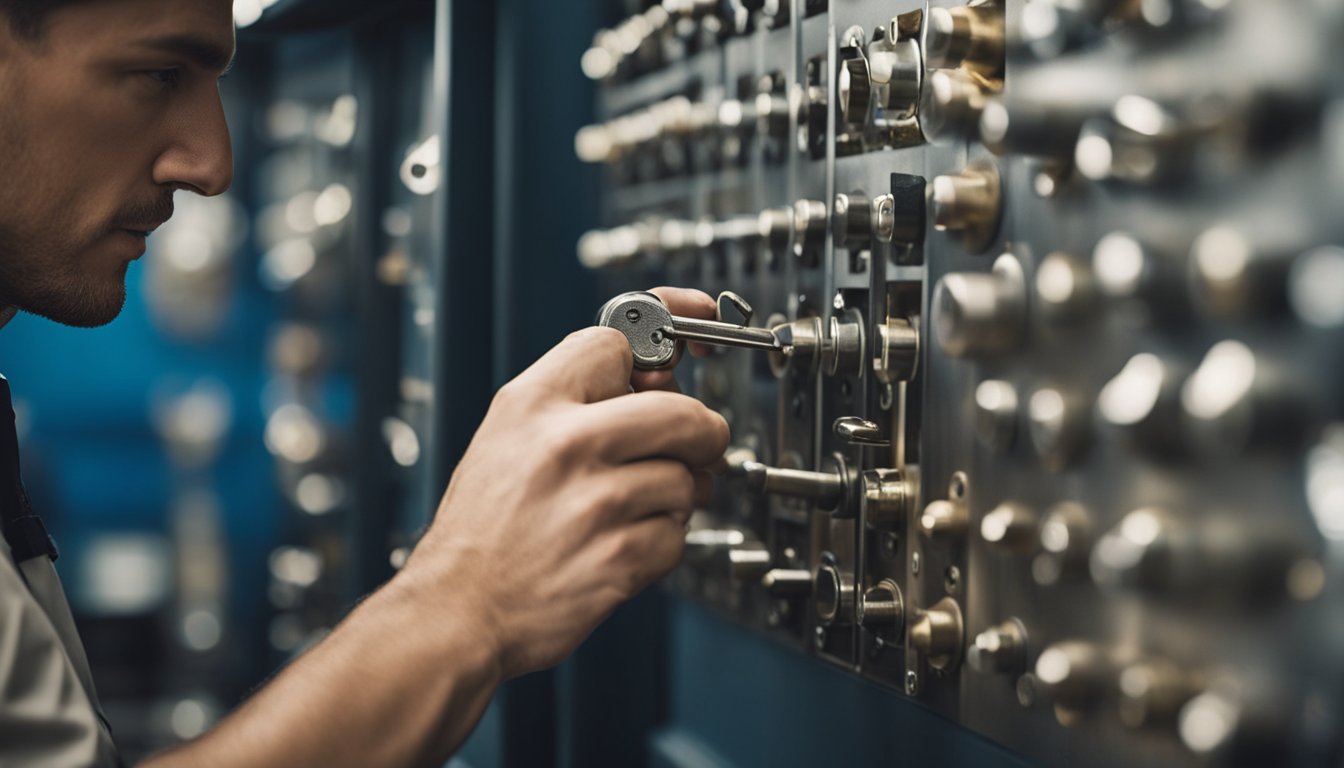Late updated: 10 Jul 2024 13:07
Written by: Elena Prescott
How To Avoid Common Lock Maintenance Mistakes: Expert Tips for Proper Care
Lock maintenance is an essential aspect of home security that many of us might overlook. A well-maintained lock ensures not only the safety of our homes but also extends the life of the locking mechanism itself. Avoiding common lock maintenance mistakes can save us from costly repairs and keep our home security intact. By paying attention to a few essential tips, we can keep our door locks functioning smoothly and securely.

Using the wrong type of lubricant or applying too much can cause the mechanism to become sticky and difficult to operate. Regular cleaning and the appropriate use of lubricant can help prevent debris and dirt from building up inside the lock, ensuring it functions smoothly. Additionally, it’s crucial to use the correct key for each lock and avoid using excessive force, as this can damage both the key and the lock's internal components.
Investing in high-quality locks from reputable brands can significantly enhance our home security. Skipping on quality for a cheaper option may leave our homes vulnerable to intruders. By understanding the importance of quality materials and proper maintenance, we can ensure both the longevity and reliability of our locks, bringing peace of mind.
Key Takeaways
- Regular maintenance preserves lock functionality and security
- Proper use of lubricant and cleaning prevents common lock issues
- Quality locks are essential for robust home security
Understanding Lock Components and Their Functions
Maintaining locks effectively requires familiarity with their various components and their specific roles. By recognising signs of wear early and conducting routine inspections, we can ensure the longevity and proper function of our locks.
The Anatomy of Common Locks
Locks consist of several essential parts, each with a distinct function. In a doorknob lock, the key component is the cylinder, which houses the pins that interact with the key. Deadbolts, known for their enhanced security, have a bolt that physically secures the door. The strike plate helps align the bolt with the door frame, ensuring a secure lock.
Padlocks are portable, using a shackle to secure items. Understanding each part's role helps us appreciate how locks function.
Identifying Signs of Wear and Potential Issues
Over time, locks can exhibit signs of wear, leading to functionality issues. Difficulty turning the key often indicates worn pins or rust within the cylinder. Jammed locks can result from the misalignment of internal components or debris buildup.
Rust and corrosion are common, particularly in outdoor padlocks, which can weaken the metal and affect the lock's strength. Regularly inspecting for these signs can prevent more serious damage.
Importance of Regular Inspections
Routine inspections are crucial for maintaining lock functionality and security. We should look for visible wear on keys, as worn keys can deform pins and cylinders. Lubrication is essential to prevent rust and ensure smooth operation.
Checking the tightness of screws and other fasteners will confirm the integrity of the strike plate and other components. By addressing minor issues through regular maintenance, we can extend the lifespan of our locks and ensure they provide reliable security.
Proactive Maintenance and Troubleshooting

Proactive maintenance helps us prevent lock malfunctions before they happen, ensuring the locks remain functional and secure. Effective cleaning, lubrication, and knowing when to call a professional are crucial elements.
Effective Cleaning and Lubrication
Regular cleaning and lubrication of locks can prevent debris build-up and ensure smooth operation.
We recommend using graphite powder or a silicone-based spray for lubrication. Avoid using oil-based products as they attract dust and dirt.
Use a soft-bristled brush to clean the keyway. This will remove any accumulated particles without causing damage.
By keeping the locks clean and well-lubricated, we can significantly extend their lifespan and maintain their reliability.
Common Mistakes to Avoid
There are several common mistakes we should avoid to ensure our locks remain in good working condition. Using excessive force when turning the key can bend or break it and damage the internal components of the lock.
Always use the correct key for the lock. Using the wrong key can not only damage the lock but also the key.
Investing in high-quality locks is essential. Cheap locks may save money upfront, but they're easier to pick or break, compromising home security.
When to Seek Professional Help
It's important to know when a situation requires professional assistance. If we encounter issues like misaligned strike plates, broken keys, or worn-out locks, it's best to contact a locksmith.
Attempting to fix these issues ourselves could lead to more significant damage and costly replacements.
Professional locksmiths have the tools and expertise to rekey locks, fix misalignment, and deal with advanced lock systems. By seeking professional help when needed, we can ensure our locks are repaired correctly and efficiently.
Frequently Asked Questions

Our door lock maintenance guide addresses key steps to keep your locks in good working order, deal with common problems, and ensure reliability through proper care routines.
What steps should be taken for proper door lock maintenance in the home?
Regularly clean locks with a soft brush or compressed air to remove dust and debris. Use a graphite-based lubricant sparingly to keep the mechanisms smooth. Ensure no moisture builds up inside the lock, as this can cause rust.
How can one address door knob issues effectively?
Tighten any loose screws on the door knob. If the door knob sticks or doesn’t turn smoothly, clean the mechanism and apply a silicone-based lubricant. Replace any worn-out or damaged components promptly.
What is the recommended frequency for lubricating door locks?
Lubricate your door locks at least once a year. More frequent lubrication might be necessary in areas with extreme weather conditions. Always use the appropriate lubricant designed specifically for locks to avoid attracting dirt and grime.
Which maintenance practices are critical for ensuring the longevity of locks?
Apart from regular cleaning and lubrication, avoid using excessive force when operating the lock. Periodically check for loose components and tighten them. Replace any parts showing signs of excessive wear to prevent breakdowns.
How can issues with a door lock mechanism that fails to turn be resolved?
If a lock mechanism fails to turn, clean out any dirt or debris. Apply a small amount of lubricant to see if this resolves the issue. If the problem persists, disassemble the lock to inspect for internal damage, and replace faulty parts if necessary.
What preventive measures can be implemented to avoid lockouts?
Always have a spare key stored in a secure, accessible location. Regularly check keys for wear and consider duplicating frequently used keys to avoid them breaking or bending. Install a keypad lock or smart lock for keyless entry.
